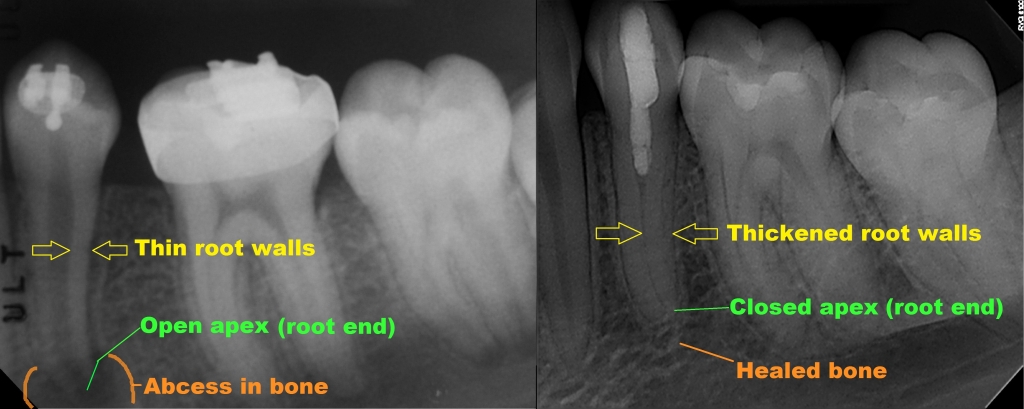Regenerative Endodontics
Regenerative Endodontics is a fairly new option for the treatment of immature teeth that have become necrotic due to trauma or deep decay. This procedure utilizes the concept of tissue engineering to regenerate a pulp-like tissue inside the tooth that can finish forming the root walls and apex (root end). In children, developing teeth that have not reached maturity have thin root walls and the apex of the tooth has a broad opening where the nerves, blood vessels and other connective tissue enter the tooth. When the pulp tissue inside an immature tooth dies, that tissue can no longer perform its function of finishing the formation of the tooth root. These teeth are weak due to the thin root walls and are susceptible to fracturing with any subsequent trauma. Conventional root canal procedures are also challenging with a poor prognosis due to the difficulty in sealing the open apex at the root end.
Historically, we attempted to create a hard, calcific barrier at the end of these roots to seal our root canal filling material against, but long term prognosis was still poor for these teeth because the root walls were thin and susceptible to fracturing.
With regenerative endodontic treatment, the necrotic pulp tissue is removed, the canal is disinfected with a triple antibiotic paste and then the canal is instrumented beyond the apex until bleeding is produced into the canal, forming a blood clot. The blood clot is covered with a special material called MTA, or Mineral Trioxide Aggregate. The blood clot contains stem cells which can differentiate into cells that continue the formation of the root, resulting in continued root development, increased thickness in the root walls and apical closure.


